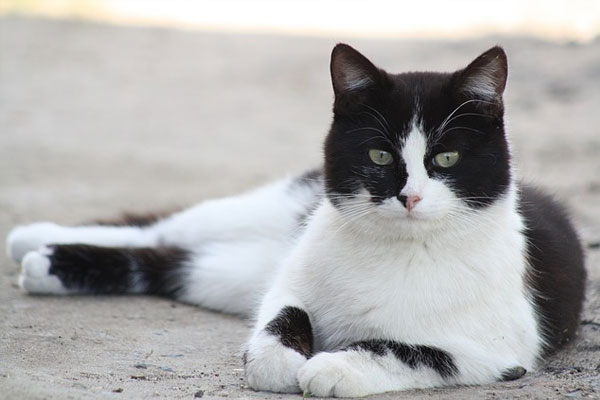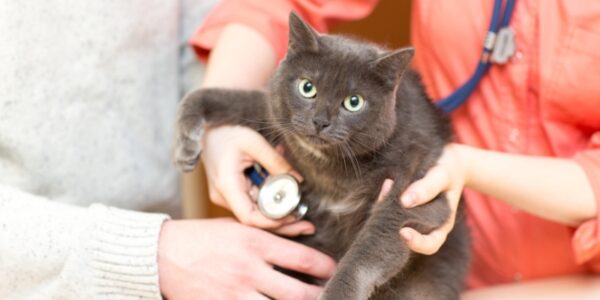- Cats can hear sounds too faint or too high in frequency for human ears, such as those made by mice. They can also see in near darkness.
- Cats have relatively few taste buds compared to humans. Domestic and wild cats share a gene mutation that leaves them with no ability to taste sweetness.
- To aid with navigation and sensation, cats have dozens of movable whiskers over their body, especially their face. These provide information on the width of gaps and on the location of objects in the dark, both by touching objects directly and by sensing air currents.
- The average life expectancy for male indoor cats at birth is around 12 to 14 years. However, there have been reports of cats reaching into their 30s, with the oldest known cat, Creme Puff, dying at a verified age of 38.
- Cats usually sleep 12-16 hours a day, although some cats can sleep as much as 20 hours in a 24-hour period. The term “cat nap” for a short rest refers to the cat’s tendency to fall asleep (lightly) for a brief period. While asleep, cats experience short periods of rapid eye movement sleep often accompanied by muscle twitches, which suggests that they are dreaming.
- Domestic cats use many vocalisations for communication, including purring, trilling, hissing, growling/snarling, grunting, and several different forms of meowing. By contrast, feral cats are generally silent.
- Types of body language, including position of ears and tail, relaxation of whole body, and kneading of paws, are all indicators of mood. The tail and ears are particularly important social signal mechanisms in cats e.g. with a raised tail acting as a friendly greeting, and flattened ears indicating hostility.
- It has been theorised that the high-pitched sounds house cats make to solicit food may mimic the cries of a hungry human infant, making them particularly hard for humans to ignore.
- Cats are known for their cleanliness, spending many hours licking their coats. If you have ever been licked by a cat, you have probably noticed that their tongues feel like sandpaper. Cats use their tongue to brush their fur and keep it smooth.
- Owing to the close similarity between play and hunting, cats prefer to play with objects that resemble prey, such as small furry toys that move rapidly, but rapidly lose interest (they become habituated) in a toy they have played with before. Cats also tend to play with toys more when they are hungry.
- The mechanism by which cats purr is elusive. The cat has no unique anatomical feature that is clearly responsible for the sound. However, felids of the Panthera genus (tiger, lion, jaguar and leopard) also produce sounds similar to purring, but only when exhaling.
- Kittens purr to let their mother’s know that everything is ok. Adult cats purr when they feel safe and happy. Cats can purr for a long period of time without stopping.
- Cats have 4 four different meanings for “‘meow'”. If you listen carefully, you can hear that each meow is different: 1). I’m hungry!, 2). I want to go out!, 3). Help! and 4.) I want attention!
- Cats will sometimes roll over on their backs when they see you. This is probably the friendliest thing a cat can do. It’s his/her way of saying ‘I trust you’.
- Cats often press against you with their paws. Kittens get milk by nursing from their mother. They press against their mother with one paw and then the other. This is called “kneading”. Kneading helps the mother cat give milk to the kittens. When adult cats knead with their paws, it reminds them of their mother when they were a kitten.
- Do cats always land on their feet? Not always, but they have better balance than most animals. When cats spread out their back and front legs they fall more slowly, because their bodies act as a parachute. The tail can also help balance a cat.
- Cats rub up against your leg to make you smell like a cat. The more you smell like them the more they like being around you. Also, they are letting other cats know that you are their own special friend. They are depositing their scent, or marking their territory, on you. A cat will rub its head or the side of its chin against you, the furniture, or any object. Cats have glands on their forehead, mouth and chin that produce pheromones and they transfer these onto objects.
- Cats sometimes make mad dashes around the house. This is because they have pent-up energy that needs to be released. Instincts also make them want to hunt and run.
- Catnip is a plant that cats love to smell. It is often stuffed in many cat toys and can be sprayed on their toys too. Why does catnip make cats act crazy? It is a response to the herb’s chemical. Catnip produces feelings of ecstasy through the odour, not the taste.
- Can you train a cat to do tricks? Cats are not like dogs, but they can understand many human words and commands. Many common tricks that cats can learn are retrieving a ball, ring the doorbell, or turn on a tap.
- Are cats smart? In the animal kingdom, the cat’s IQ is surpassed only by monkeys and chimps. Cats think and adapt to changing circumstances and learn by observation, imitation, and trial and error. Interestingly, cats seem to learn more quickly from their own mothers than from examples set by unrelated cats, but imitate humans. They have been shown to exhibit greater problem solving abilities than dogs. Tests conducted by the University of Michigan and the Department of Animal Behavior at the American Museum of Natural History have concluded that while canine memory lasts no more than 5 minutes, a cat’s recall can last as long as 16 hours, exceeding even that of monkeys and orangutans.
- Why do cats wag their tails from side to side? The tail moving from side to side in a gentle manner means contentment. If the cat is sitting quietly, she might be focused on something. Fast, whipping back and forth could be anger or annoyance. Tail wagging in between these descriptions could mean he or she’s feeling indecisive.
- Why do cats love boxes so much? When cats explore, one thing they are looking for is a potential hiding space. The experience of jumping and sliding into a box resonates with their instinct to find protected spaces out in the wild where they are able to see their environment without being seen.




